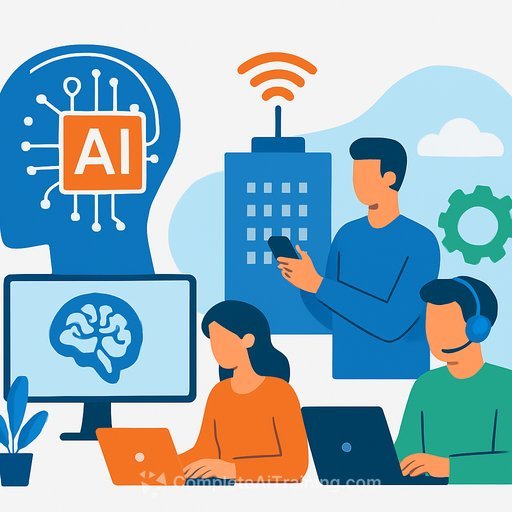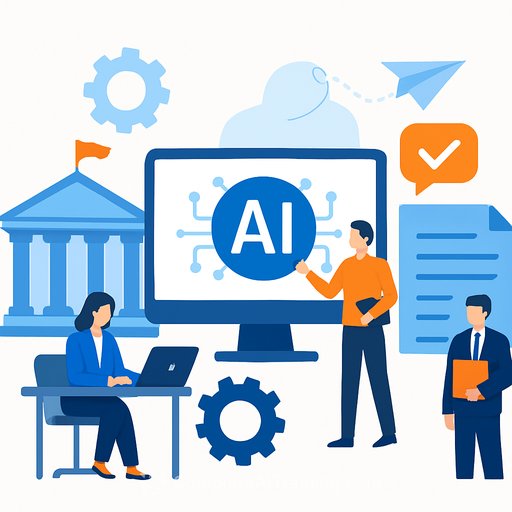5 Step Roadmap to Transforming Operations for the Age of Intelligence
Communications Service Providers (CSPs) face growing pressure to deliver innovative services at scale, cut operational costs, and meet rising customer expectations. Artificial Intelligence (AI), automation, and analytics offer a clear way forward. These technologies allow CSPs to become AI-native organizations, embedding intelligence into their networks and decision-making processes.
This transformation goes beyond technology—it’s strategic. Acting on insights in real-time becomes a key advantage as telecoms evolve into digital-first enterprises.
Operators that use AI to make faster decisions, streamline operations, and customize services will better handle market changes, regulations, and new innovations. For instance, McKinsey estimates that Generative AI (GenAI) could unlock $60–100 billion in revenue and productivity gains globally for telecoms, potentially rising to $250 billion long term.
Yet adoption is slow. Legacy infrastructure, fragmented data, internal resistance, and lack of AI expertise hold many back. Overcoming these challenges needs more than tools—it requires a mindset shift. Prioritizing governance, transparency, and cross-team collaboration builds the trust and structure needed to scale AI safely and effectively.
Here’s a five-step roadmap to move from fragmented AI efforts to an intelligence-first model built for growth, agility, and resilience.
Step 1: Break Down Silos — Make AI Work Across the Business
AI delivers the most value when it operates across departments, not in isolated pockets. Many operators start by applying AI to customer experience improvements, but that only scratches the surface.
A dropped call, for example, isn’t just a customer care issue—it may point to deeper network problems affecting multiple users. Unless AI spans the entire value chain, from infrastructure to support, its impact stays limited.
Take fraud detection. Unusual usage might first show up in billing, but without access to network or CRM data, early signs are missed. Integrated AI systems that combine logs, subscriber profiles, and network data can detect, correlate, and act faster than siloed teams.
Unified AI can uncover fraud and automate responses like rerouting traffic or sending alerts in real-time. This cross-functional intelligence is essential for business models such as Network-as-a-Service (NaaS), edge computing, or global IoT platforms. In these scenarios, AI acts as the orchestration engine to ensure speed and reliability.
Embedding AI across operations isn’t optional; it’s what separates legacy networks from modern, adaptive, autonomous infrastructure ready for the future.
Step 2: Use Real-Time Analytics to Stay Ahead of Threats and Service Gaps
Moving from static dashboards to real-time, closed-loop analytics is a turning point for telecom operations. CSPs need systems that ingest and act on insights as events happen—not after the fact.
This is critical for fraud prevention. Traditional rule-based systems struggle against evolving threats. AI-powered analytics spot anomalies on the fly—whether SIM cloning, subscription fraud, or identity theft—and stop them before damage spreads.
Service assurance also benefits. AI predicts congestion, detects minor performance dips, and reallocates resources proactively to prevent customer impact. The goal is not just meeting SLAs but resolving issues before customers notice.
In roaming, AI detects revenue leakage, flags irregularities, and optimizes traffic flow. Altogether, these capabilities build networks that are responsive and adaptive to changing customer behavior and service demands.
Step 3: Strengthen Cyber Resilience with GenAI-Driven Security Modeling
Telecom networks are increasingly distributed and complex due to 5G, IoT, and cloud-native architectures. This complexity raises cyber risk. Moody’s Ratings recently classified the telecom sector as ‘very high risk’ for cyber threats.
Generative AI can help model and simulate cyberattacks, strengthening defenses before breaches occur. It can analyze threat patterns, predict vulnerabilities, and automate incident responses, minimizing damage.
Building cyber resilience requires integrating AI-driven security at every layer—from the core network to endpoints. CSPs must prioritize this to protect their infrastructure and customer data effectively.
Step 4: Cultivate AI Expertise and Foster a Collaborative Culture
Many CSPs struggle with AI adoption due to a shortage of skilled personnel and internal resistance. Investing in AI training and education is essential to build in-house expertise.
Creating cross-functional teams that blend operations, data science, and IT encourages collaboration and accelerates AI projects. This approach ensures AI initiatives align with business goals and operational realities.
Leadership must champion AI efforts openly, setting clear governance frameworks to build trust. Transparency in AI use and outcomes fosters acceptance and drives adoption across the organization.
Step 5: Scale AI with Governance and Clear Metrics
Scaling AI requires robust governance to ensure ethical, transparent, and compliant use. CSPs should define clear metrics to measure AI impact—from cost savings to improved customer satisfaction.
Regularly reviewing AI initiatives against these metrics allows operators to refine models, eliminate waste, and focus on high-impact areas. This disciplined approach turns AI from experimental to a core enabler of business performance.
By following this roadmap, CSPs can transform operations to thrive in the age of intelligence, delivering faster decisions, better service, and stronger resilience.
Your membership also unlocks:






